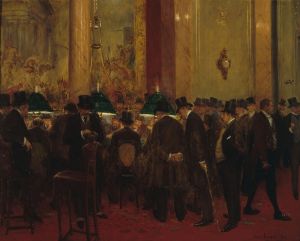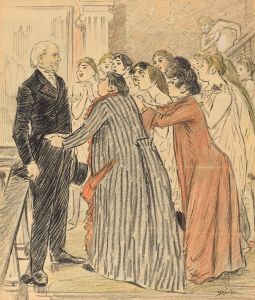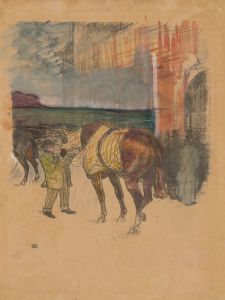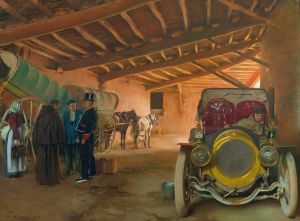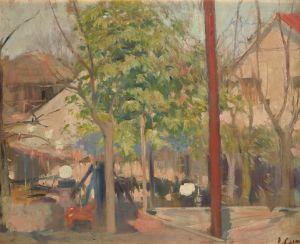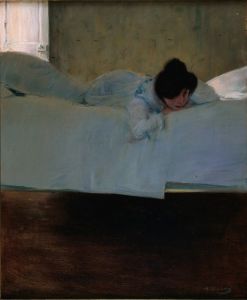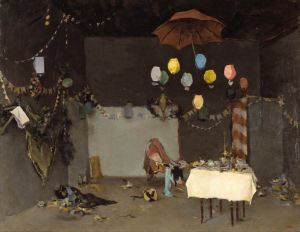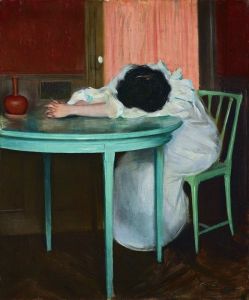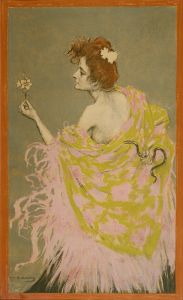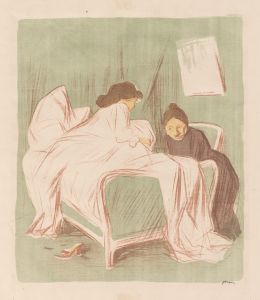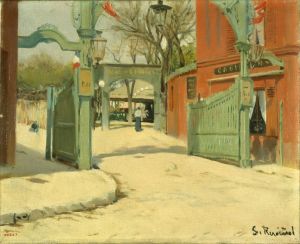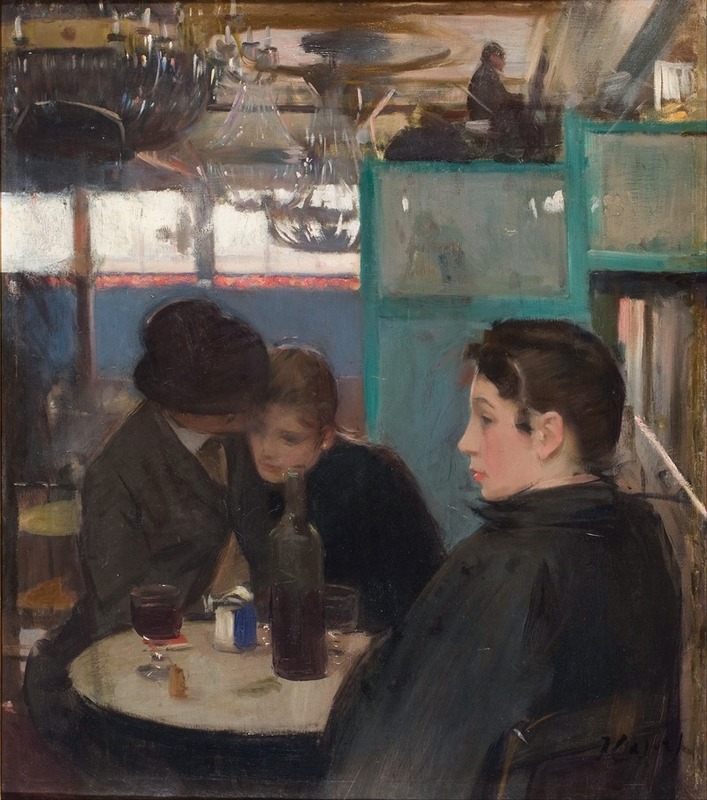
Moulin De La Galette Interior
A hand-painted replica of Ramón Casas’s masterpiece Moulin De La Galette Interior, meticulously crafted by professional artists to capture the true essence of the original. Each piece is created with museum-quality canvas and rare mineral pigments, carefully painted by experienced artists with delicate brushstrokes and rich, layered colors to perfectly recreate the texture of the original artwork. Unlike machine-printed reproductions, this hand-painted version brings the painting to life, infused with the artist’s emotions and skill in every stroke. Whether for personal collection or home decoration, it instantly elevates the artistic atmosphere of any space.
Ramón Casas i Carbó was a prominent Spanish painter known for his significant contributions to the Catalan Modernisme movement, which paralleled the broader European Art Nouveau style. Born in Barcelona in 1866, Casas became renowned for his portraits, genre scenes, and depictions of social and cultural life in Barcelona and Paris during the late 19th and early 20th centuries. One of his notable works is "Moulin De La Galette Interior," which captures the vibrant atmosphere of one of Paris's most famous dance halls.
The Moulin de la Galette was a popular venue located in the Montmartre district of Paris, an area known for its bohemian lifestyle and as a gathering place for artists, writers, and musicians. The dance hall was part of a larger complex that included a windmill, which gave the venue its name. During the late 19th century, Montmartre was a hub of artistic activity, attracting figures such as Henri de Toulouse-Lautrec, Pierre-Auguste Renoir, and Pablo Picasso. Casas, like many artists of his time, spent periods in Paris, where he was influenced by the city's dynamic art scene.
"Moulin De La Galette Interior" reflects Casas's keen interest in capturing the essence of social gatherings and the lively spirit of urban life. The painting portrays the interior of the dance hall, bustling with elegantly dressed patrons engaged in conversation and dance. Casas's use of light and color effectively conveys the lively ambiance of the venue, with warm tones and dynamic compositions that draw the viewer into the scene. The painting is a testament to Casas's skill in rendering human figures and his ability to depict the subtleties of social interaction.
Casas's work often focused on modern life and the changes brought about by urbanization and industrialization. His paintings provide a window into the cultural and social dynamics of his time, offering insights into the leisure activities and entertainment venues that were popular among the urban middle and upper classes. "Moulin De La Galette Interior" is no exception, as it captures a moment of leisure and enjoyment in one of Paris's iconic social settings.
Throughout his career, Casas maintained a strong connection to his Catalan roots, and his work often reflects a blend of local and international influences. He was a key figure in the Catalan Modernisme movement, which sought to create a distinct cultural identity for Catalonia through art, architecture, and literature. Casas's paintings, including "Moulin De La Galette Interior," exemplify the movement's emphasis on modernity, elegance, and a celebration of contemporary life.
Today, Ramón Casas is celebrated as one of the leading figures of Catalan Modernisme, and his works are held in high regard for their artistic merit and historical significance. "Moulin De La Galette Interior" remains an important piece in understanding the cultural exchanges between Barcelona and Paris during a pivotal period in art history. The painting is a vivid representation of the cross-cultural influences that shaped the art of the late 19th and early 20th centuries, highlighting Casas's role as a bridge between the artistic communities of Spain and France.





